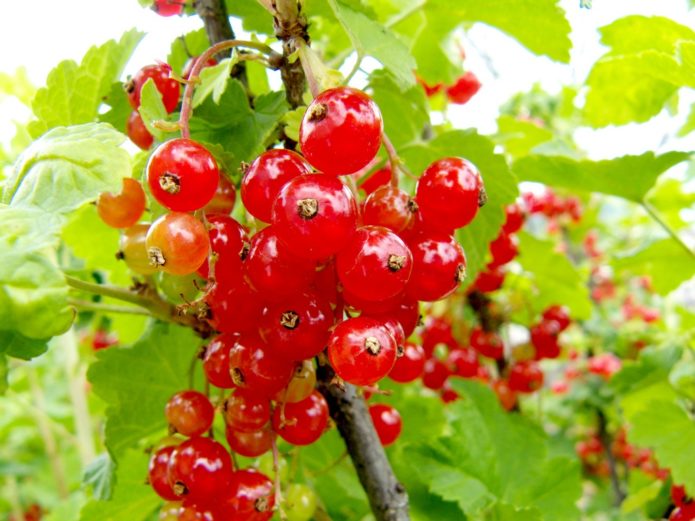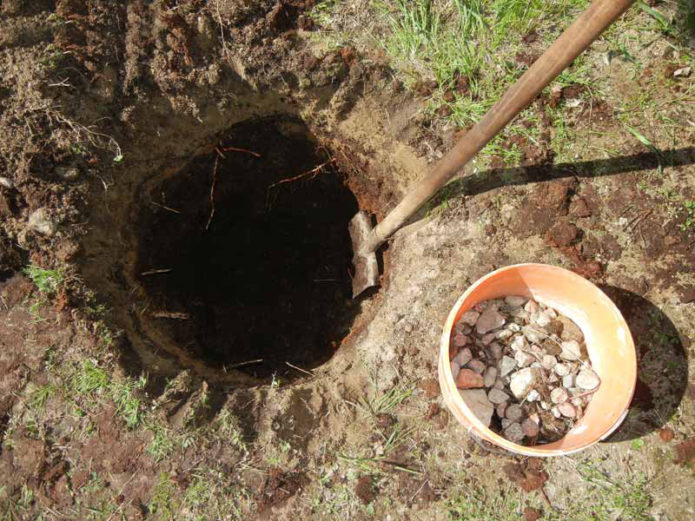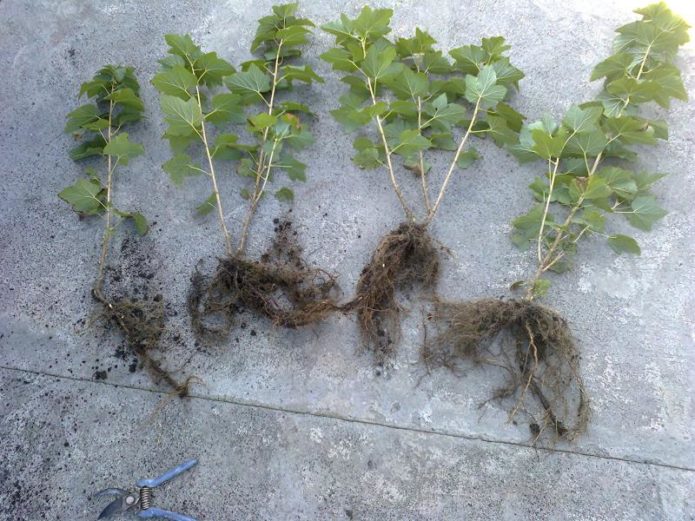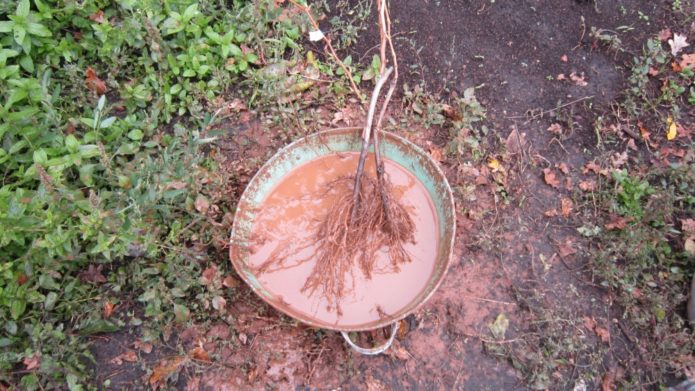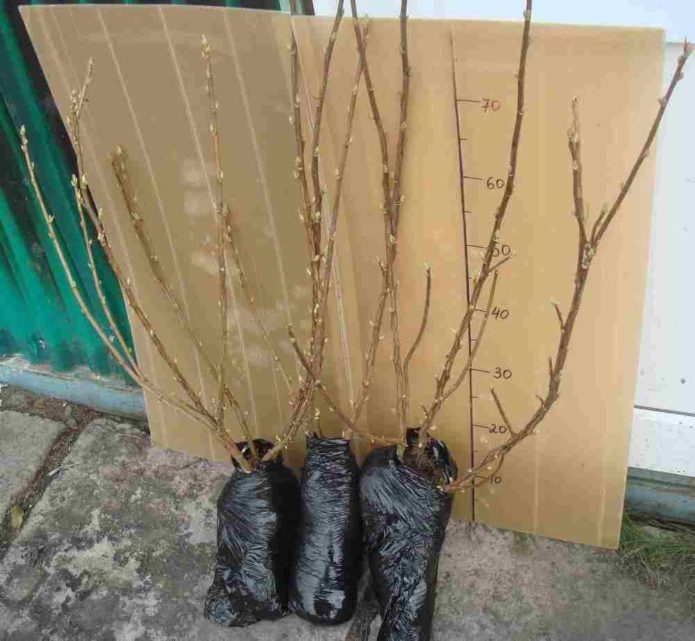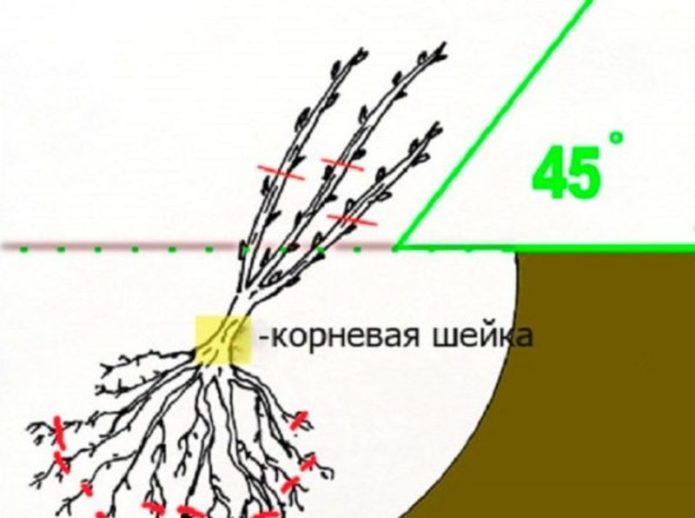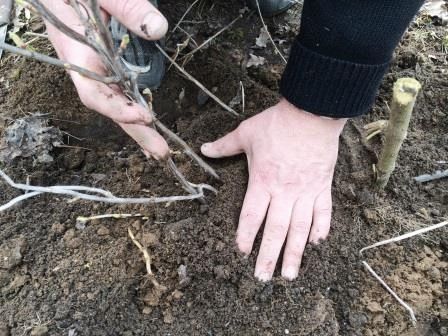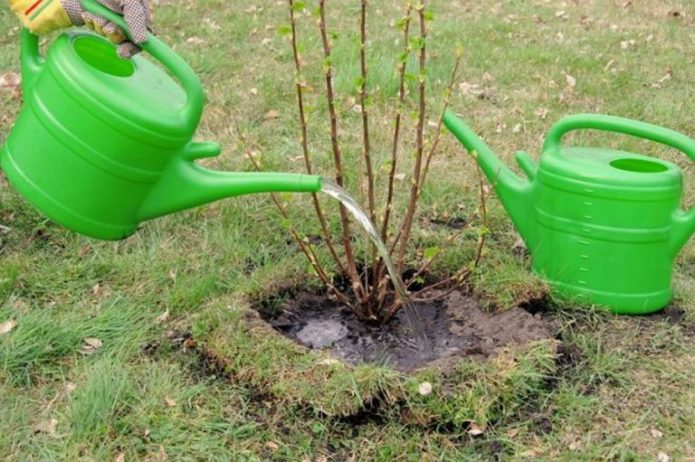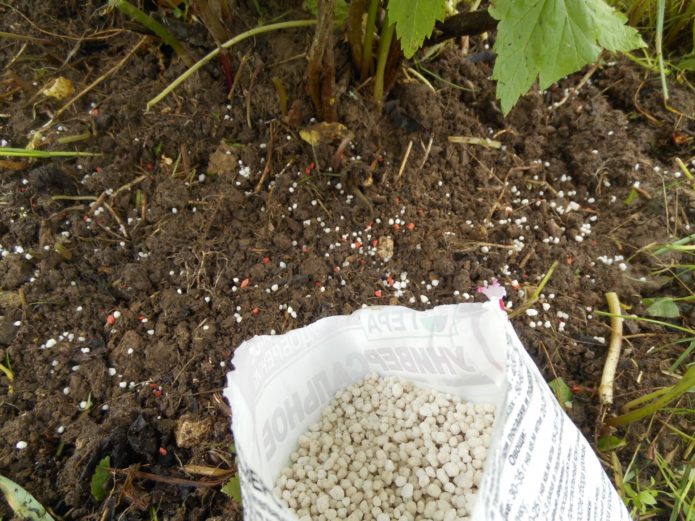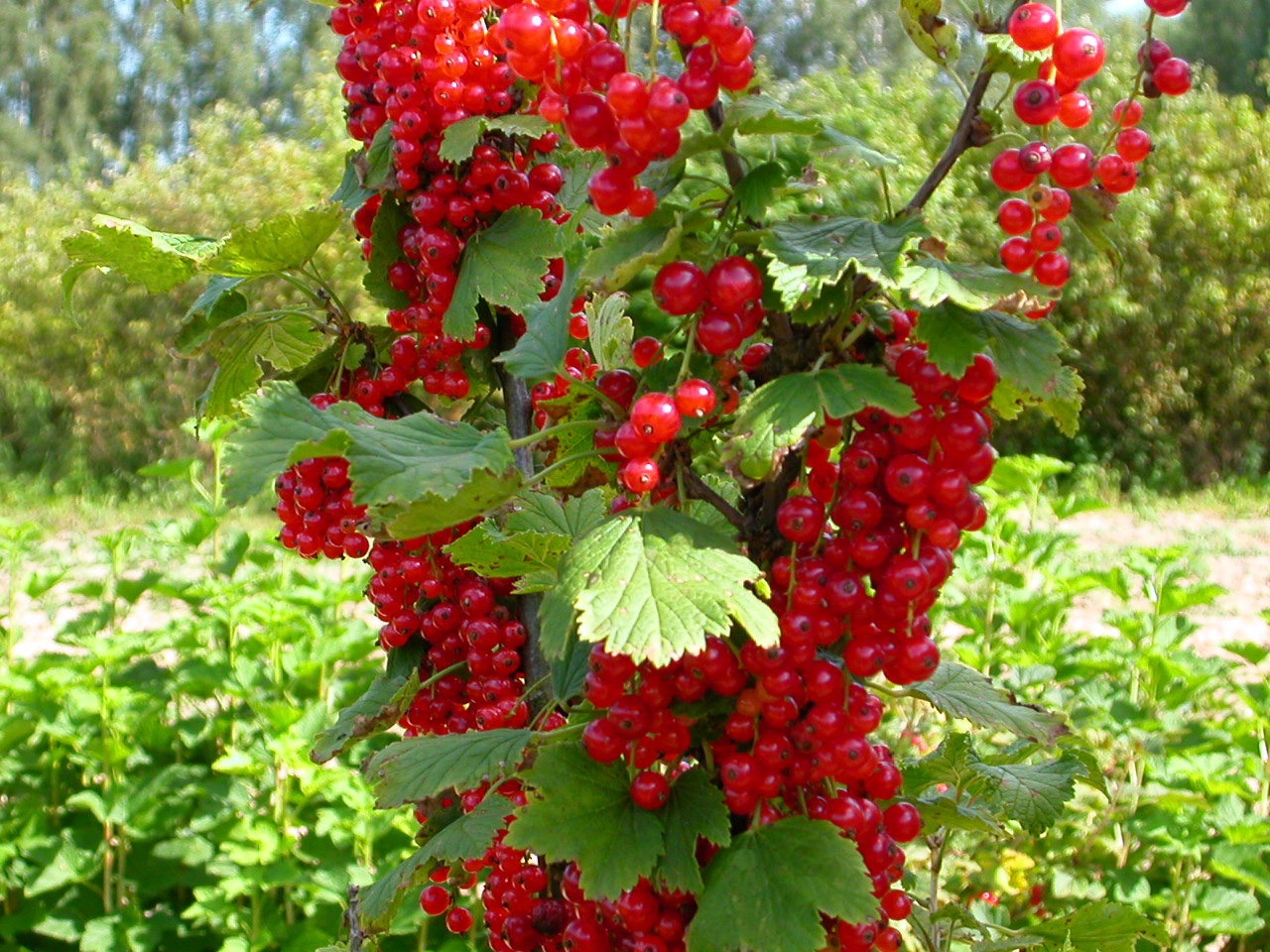For some reason, red currants are considered not as useful as black currants, but every gardener tries to plant at least one bush of it. After all, this is a very tasty and beautiful berry that brings variety to the summer assortment of vitamin products. One of the most famous varieties of such currants is far from the new Early Sweet.
Content
History of breeding, description and characteristics of currants Early sweet
Currant of the Early Sweet variety, obtained on the basis of Chulkovskaya and Laturnais, has been known since 1963. It was then that its creators, N.K.Smolyaninova and A.P. Nitochkina, employees of the All-Union Institute of Horticulture (now FSBSI VSTISP) filed an application for registration of the variety in the State Register of Breeding Achievements. However, for some reason, it was only registered in 1974, after ten years of variety trials. Currant is recommended for a number of regions: Central, Volgo-Vyatka, Central Black Earth and East Siberian.
The term of fruit ripening is already laid down in the name of this currant. Its berries grow on medium-sized bushes, which take up a lot of space due to their strong spreading; it is especially evident at an early age. Many shoots are formed in the bush, which is why systematic pruning is one of the mandatory techniques for growing. The color of the shoots is from greenish at a young age to gray-brown when fully ripe. Leaves are of normal size, wrinkled.
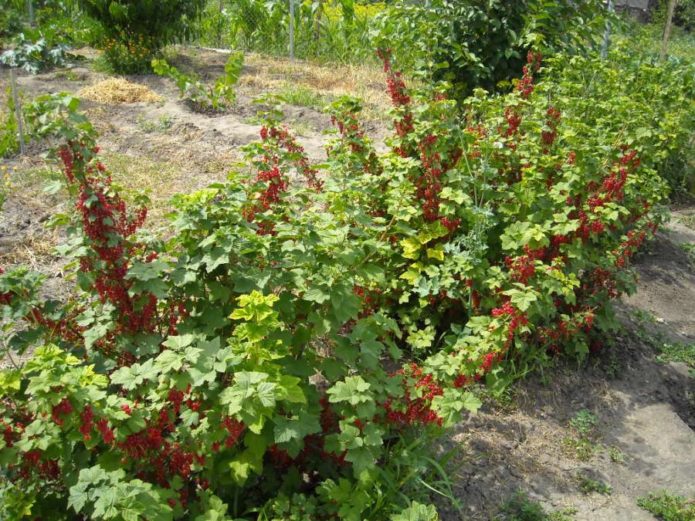
The currant bushes of the Early Sweet variety are quite compact, but the tops of the shoots are spread out to the sides
The brushes are large, up to 11 cm long, not very densely filled with berries. The berries themselves are medium-sized, weighing no more than 0.9 g, round, not always of the same size: from the base of the brush to its crown, the size of the berries decreases. The color is dark red, the skin is medium-dense, the taste is considered very good, sweet and sour (average rating of tasters is 4.0). Early sweet belongs to the varieties of universal-purpose currants: its fruits are good both when consumed immediately after harvest, and for various preparations. It retains its properties well when frozen.
Ripening of berries within each cluster is almost simultaneous, urgent collection is not required: the fruits are long and firmly held on the branches. When removed from the brush, the berries remain dry. The total yield from one bush reaches 3.5-4 kg. There are reports of records of 8 kg, but this is possible only with ideal weather conditions and careful care. With industrial cultivation, the yield is estimated at 120 c / ha. High transportability.
Differences in spring and autumn planting of red currants:https://flowers.bigbadmole.com/en/yagody/smorodina/posadka-krasnoy-smorodiny.html
Pollinators are not required for this currant. The variety is characterized by a very high winter hardiness (easily tolerates frosts -30 aboutC), resistance to most known diseases and pests.Sometimes the bushes get sick with fungal infections: anthracnose, as well as powdery mildew.
Features of agricultural technology currant Early sweet
Growing currants Early sweet is almost the same as in the case of other varieties of red or white currants and is not particularly difficult.
Landing
It is customary to plant this currant at the very end of summer or early autumn: spring planting is much more difficult, since it must be carried out in a very short time. Red currant of the Early Sweet variety is not very picky, but it grows best in well-lit places, even on small hills.
Soil for full-fledged fruiting of red currants Early sweet - breathable slightly acidic soil: both light loam and sandy loam, rich in nutrients, are suitable. Groundwater should not come close to the roots, lowlands are not a place for Early Sweet: if necessary, it is even better to build an artificial hill. The main doses of fertilizers are laid in the pits, but the surrounding area should also be fertilized in moderation: after all, the bushes grow rapidly.
Pits are prepared measuring 40 cm in width and length and a little more in depth. If several bushes are planted in one row, a distance of 1.5 m is left between them.No more is needed: this variety has rather compact bushes, although the tops of the shoots deviate to the sides.
Fertilizers for planting red currants Early sweet - 1.5 buckets of humus or good compost, 200 g of superphosphate, and a liter can of wood ash. If no ash is stored, it is replaced by 30–40 g of potassium fertilizer: sulfate or nitrate, but not chloride: when buying any mineral fertilizers, you should carefully look to make sure they do not contain chlorine compounds.
Best of all, 2-3-year-old currant seedlings, Early sweet, take root and grow. But if they were obtained by rooting cuttings on your site, it's okay if the cuttings were planted last fall: such bushes can already be carefully dug out with a lump of earth and planted in a prepared permanent place.
Technology, features and unconventional methods of planting currants in a summer cottage:https://flowers.bigbadmole.com/en/yagody/smorodina/kak-posadit-smorodinu.html
When buying a seedling, it is necessary to examine the root system especially well: it must be elastic, intact and well developed. The purchased seedlings must be transported to the planting site in plastic bags. The landing itself is not difficult:
- Arriving at the site, slightly (3-4 cm) trim the tips of the roots and soak the seedlings in water for 2-3 hours. After that, the roots are dipped in a clay mash (a creamy mixture of clay, soil and water, possibly with the addition of mullein).
- Leaves are removed from the shoots, the branches themselves are shortened by about a third (you can do this after planting, as it is more convenient for anyone).
- The required amount of soil mixture is taken out of the pit: so that the seedling tilted 45about, freely placed in a pit with a small depth.
- They put the seedling in the hole with its roots, straighten the roots, making sure that the root collar is 6–8 cm below ground level. Slowly fill the roots with the removed soil.
- Water the currants, spending about a bucket of water, after which they form a roller along the edges of the hole, water it again and mulch with peat or sawdust. After planting, 3-4 buds are left on the shoots above the ground.
If a planting currants in autumn was carried out no later than the first week of September, you should not worry about wintering: The early sweet one will have time to take root and survive the winter easily; only in very cold regions in the first year it is necessary to insulate it almost to the top, using non-woven materials or coniferous spruce branches.
Video: planting red currant varieties Early sweet
Care
All basic operations for the care of currant bushes Early sweet are well known even to an inexperienced gardener. This variety of currant is quite drought-resistant, but heat and too long a lack of moisture can lead to both a decrease in the yield in the current year and a weakening of the bush in the following. Therefore, in those regions where rains are infrequent, the bushes are watered up to three times per season, spending 2-3 buckets of water for a relatively young bush and up to 4-5 buckets for an adult.
When watering, the soil should be reliably soaked by 40-50 cm.
The first watering is carried out after the end of flowering. The second time the bushes are watered immediately after the final harvest. The third watering is in October, during the preparation of currants for wintering. After each watering, the ground around the bush is shallowly loosened.
The first feeding of currants of the Early Sweet variety is carried out in early spring. Around the bush, 50 g of urea (dry) is scattered and shallowly embedded in the soil. The same procedure is repeated immediately after the end of flowering.
In summer, the bushes are fed with organic matter. For this purpose, you can use both mullein (infusion with water, taken in a volume ratio of 1: 4) and chicken droppings (1:10). No more than a liter of such infusion is enough for a currant bush, which, for convenience, is diluted several times just before the procedure.
Autumn feeding can be carried out not annually, but after a year. Around the bush, 1.5–2 buckets of compost or well-rotted manure are evenly scattered, as well as 100–150 g of superphosphate and shallowly dug the ground with a pitchfork, after which a small layer of mulch is added on top.
Currant pruning Early sweet begins already at planting (the shoots are shortened), but then for 2-3 years you can leave the bush without clearly damaged branches and very weak young shoots (these can be cut out without regret at any time). Pruning is best done in the earliest spring or, conversely, in the fall, in September-October.
Features of cutting red currants, correcting old and neglected bushes: https://flowers.bigbadmole.com/en/yagody/smorodina/obrezka-smorodinyi-vesnoy.html
In the 3rd year after planting, there may already be about 10 strong zero-order shoots (growing from the ground) in the bush, and no more than 15–20 pieces should be contained in an adult bush. They regulate their number, cutting out the weakest, and then the oldest. When choosing candidates for destruction, it should be remembered that the largest number of berries are harvested from branches located on 3-5 year old shoots. After 6-7 years, the yield on the branches becomes very low.
If there are not enough zero shoots, which is rarely the case with this variety, then in 7-8 years you can work on the oldest ones. They are shortened to powerful branches, which causes the appearance of new branches on them that can bring crops.
Early sweet is a frost-resistant variety, so the bushes are sheltered for the winter only in the coldest regions. But you need to prepare them for winter. To do this, after the fall of leaves, the leaves are raked (it is better to burn them, and if put in a compost heap, then under a thick layer of peat or earth). They dig up the ground near the bush (next to it, it is not only 5 cm, further you can go deeper) and pour a layer of mulch (peat, chopped straw, etc.).
If the winters in the region are snowy, you don't need to do anything else, but so that the snow does not break the branches, it is better to loosely tie the shoots together in a "cocoon". In cold regions, they try to bend them to the ground and cover them with spruce or pine branches or spunbond, holding the covering material with boards, bricks, etc.

In most regions, Early sweet for the winter can not be covered, but it is advisable to tie the branches so that they do not break with snow
Currant variety Early sweet is resistant to most diseases and pests and is usually affected only in case of improper care. Therefore, few people are engaged in preventive spraying on personal plots. If pests appear (leaf gall aphid, spider mite or currant glass), insecticides are used. Malofos can be recognized as universal, but it should be used strictly according to the instructions: its declared relative harmlessness to the environment is clearly exaggerated. Sometimes fungal diseases that appear are well treated with 1% Bordeaux liquid.
The crop is always harvested in dry weather, trying to pick the berries along with the brushes. If not necessary, the crop of currants of this variety can be harvested at a time: the berries on the bushes ripen more or less at the same time, and those that are ready earlier, normally keep on the branches, almost without overripe. But even overripe ones are very tasty, both fresh and in various preparations. When stored in the refrigerator, Early Sweet berries do not spoil for about a month.
Video: spring work on red currant bushes
Advantages and disadvantages of the variety in comparison with similar
The fact that the early sweet red currant has been cultivated in our gardens for half a century testifies that it is a good variety. It has almost no shortcomings: only the tapering of the berries (unequal size within the brush), excessive shoots and an increased need for nutrients are recognized as such, without which the berries become smaller. The advantages of the variety are:
- very good appearance and taste of ripe berries;
- high and annual total yield;
- excellent transportability of the crop;
- increased frost resistance;
- high resistance to pests and major diseases;
- lack of shedding of ripe berries;
- early ripening of berries.
Currently, the State Register of the Russian Federation lists about fifty varieties of red currants, and only 6 of them belong to varieties whose berries are distinguished by early ripening. This fact alone distinguishes Early Sweet from many others: early products are often not very tasty, and the berries of this currant are recognized as very tasty.
For example, the well-known variety of currant Generous, which is grown even longer. But Generous berries are smaller, located on short clusters, only 5-6 pieces. The younger variety Uralskiy Souvenir is comparable in most indicators to Early Sweet, but it is zoned only in the West Siberian region. A similar situation is with the Ogni Urala variety, the berries of which are slightly smaller, and there are only two regions of tolerance.
A new variety of red currant Ilyinka, registered in 2017, was awarded an excellent assessment by tasters, but it was also allowed for cultivation only in the west of Siberia.
Thus, the Early Sweet red currant can still be considered one of the best early varieties, although it has been grown for half a century.
Reviews
Now there are so many sweet varieties of red and pink currants, for example Early Sweet. Eat and eat from the bush and still want to, even the dog eats from the bush.
Early sweet is famous for its yield: you will collect at least 4 kg from a bush and resistance to shedding.
Varieties Early Sweet and Sugar (late) are not sour. Early sweet has a crazy yield, large, sweet berries.
Red currant Early sweet has a large list of advantages that allow it to be grown in many regions and get good yields of delicious berries.It is demanding on the nutritional value of the soil, but for the relatively easy care it thanks gardeners with early vitamin products, which are well transported and can be used in different types.
